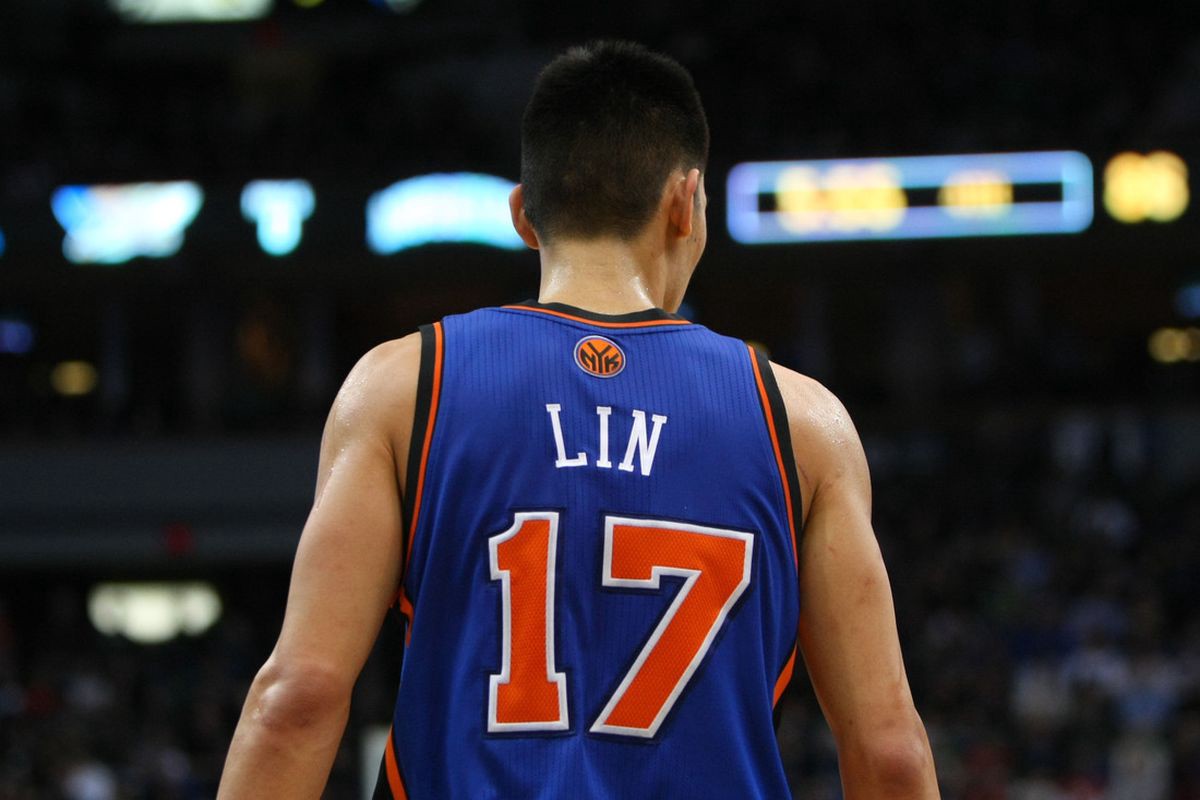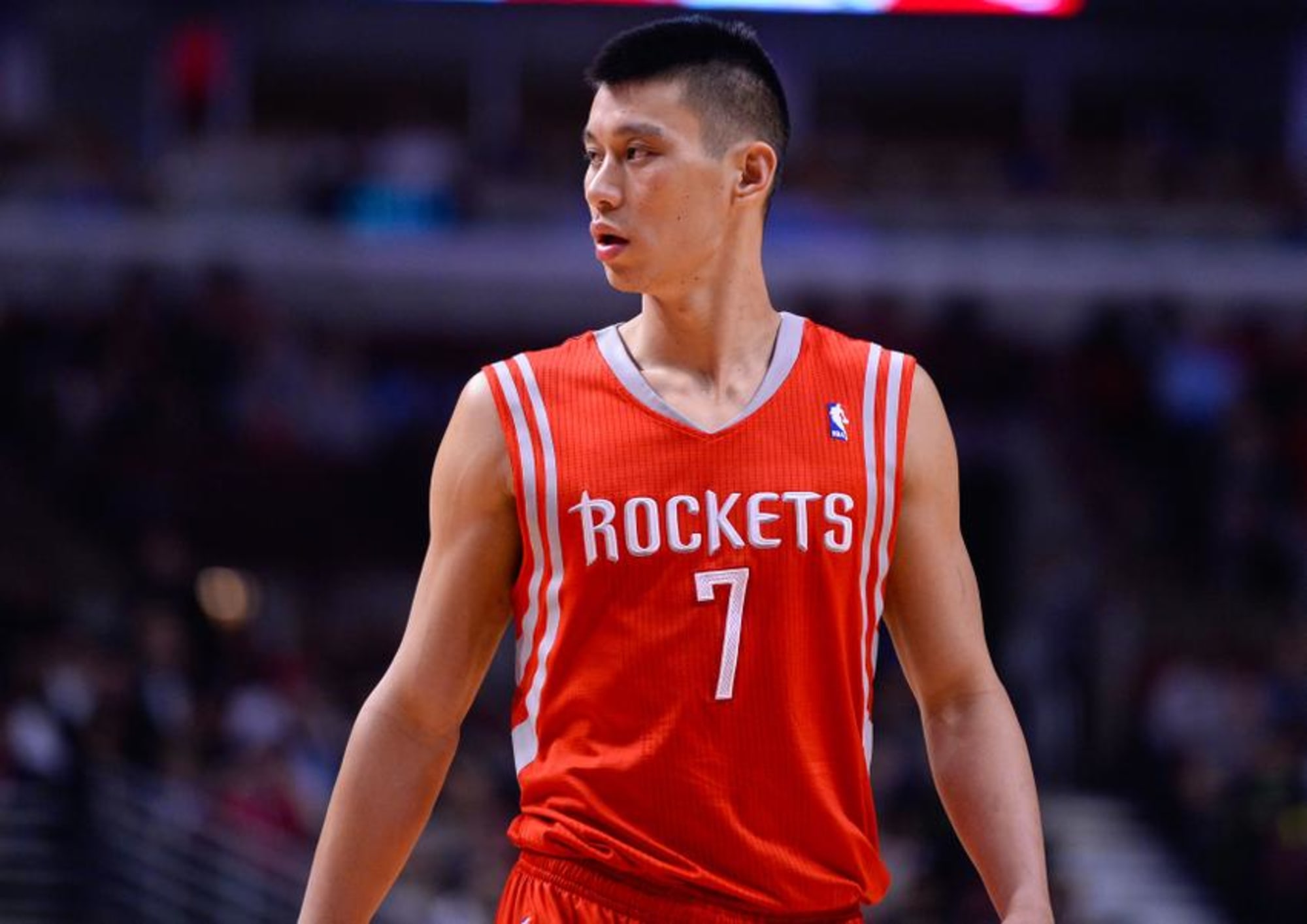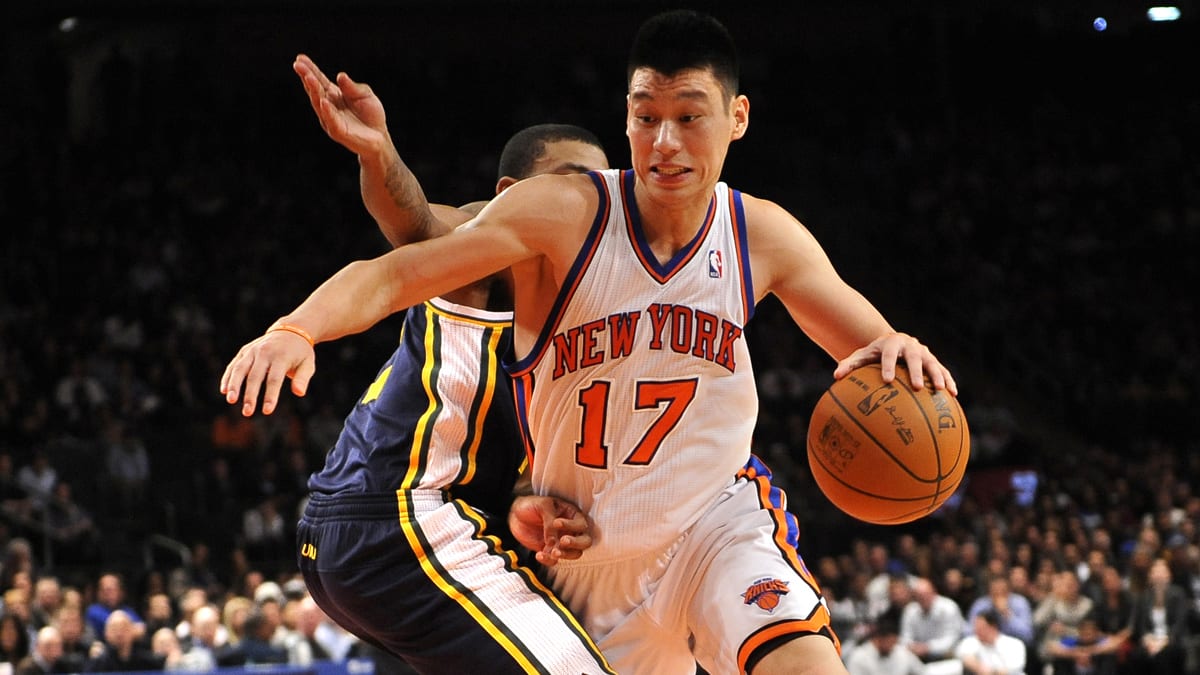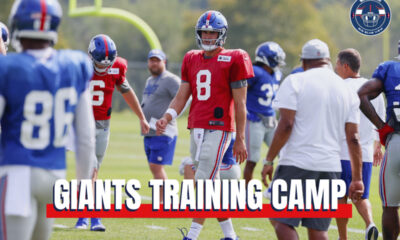
Jeremy Lin may have had a storybook beginning but what followed was anything but. Lin may not have ever become a huge star in the league but he could’ve had a much better career, especially statistically if not for some really unlucky breaks.
Linsanity had an okay career, averaging 11.6 points, 2.8 boards and 4.3 assists on decent 43.3/34.2/80/9 shooting splits. For an undrafted guy out of Harvard, Lin could have done much worse than a nine-year run. Lin’s stint in the league included a NBA championship, albeit as a benchwarmer, with the Toronto Raptors.
How Did Jeremy Lin Play?
Kathy Kmonicek/AP Photo
Lin was an interesting player, especially considering his race. Racial stereotypes hounded him for much of his career which was especially damaging to him on offense. Lin on the basketball court was average size for a point guard, standing 6’3” and 200 lbs., but for an Asian guy from Harvard his greatest asset was actually his speed rather than his brain. Lin was the fastest accelerator on the Houston Rockets during his time there and his average speed was comparable to Derrick Rose, John Wall and Kyrie Irving.
In Michael Lewis’ The Undoing Project, a book about combating bias, then Rockets general manager Daryl Morey admitted that his draft model told him Lin was worth a top fifteen pick in the 2010 NBA Draft due to his speed and ability to change direction, but the Rockets front office couldn’t believe it.
Lin’s best role was as a slasher with the ball in his hands, blowing past his man and driving hard into the lane. Early in his career, Lin paired that with a league average three-point shot and by the end he developed a respectable mid-range game. The Harvard alum was also a willing passer which was helped by a drive-and-kick game.
Contrary to the stereotype however, Lin didn’t have a ton of basketball IQ or a real mind for passing and pace. Lin often got past his man without a clear idea of what to do next, often getting stuck in the paint, or forcing a wild pass after jumping into the air with no plan.
Lin wasn’t a star on defense by any means, having trouble moving laterally against quicker guards but racked up a solid number of steals and blocks for his size and wingspan. Lin’s game isn’t far removed from Philadelphia 76ers’ guard Tyrese Maxey, another speedster that is most dangerous rocketing downhill and finishing hard. Considering Maxey is considered one of the brightest young players in the league, it’s not hard to see what Lin could have been.
Untapped Potential
Pre-NBA
Essays could be written about how the racial bias affected Lin pre-NBA. Lin led his team to the D2 championship over the famous Mater Dei, was the Northern California D2 Player of the Year, made First-Team All-State and received zero college offers.
That forced him to Harvard which basically killed his chances of getting drafted. Lin excelled there and showed out against a few ranked opponents, including 30 points against University of Connecticut featuring Kemba Walker. The butterfly effect of not getting into any sort of legitimate basketball school cannot be overstated.
Houston Rockets

Mike DiNovo/USA TODAY Sports
The focus here will be on the NBA however, this was no picnic either. Linsanity was a purely fortunate opportunity, and a tale that has been told many times. Lin’s career was pretty unfortunate after though.
Considering his skillset, Lin needed to be the one with the ball in his hands with a high usage rate, and didn’t possess the skills to play off ball well. The number of teams he deserved to be on was pretty limited to be fair, but Lin seemed to have found a good fit on the 2012-2013 Rockets. The Rockets signed James Harden in the same off-season, which made Lin’s role as a ball dominant pick-and-roll guard redundant.
The horrible fit made Lin’s move to the bench inevitable and his numbers inevitably declined. When Lin played without Harden (which was only ten total games), Lin averaged 20.9 points and 6.3 assists on 48.1/48.9/84.8 splits, which is near All-Star level. Lin was traded to the Los Angeles Lakers before he could finish out his contract.
Los Angeles Lakers
Lin’s tenure with the Lakers was tumultuous at best. Head coach Byron Scott never seemed particularly interested in winning games, and eventually Lin was replaced in the starting lineup by Ronnie Price, a perennial benchwarmer. Kobe Bryant was also at the end of his career which was not the easiest situation to play in.
Charlotte Hornets
The terrible times with the Lakers caused Lin to take a prove-it deal with the Charlotte Hornets, and excelled in the sixth man role. Lin was tasked with running the offense when Kemba Walker was resting. Lin finished seventh in Sixth Man of the Year award voting, a nice showing for him.
The California product did what he set out to do though, which was restore his value garnering him a three-year deal to start for the rebuilding Brooklyn Nets.
Brooklyn Nets

Sergio Estrada/USA TODAY Sports
This run, along with his Rockets tenure, are the real inflection points in his career. This time however, failed for a very different reason. Lin got his wish in an ideal scenario. The point guard was allowed to be ball-dominant, playing alongside a scoring big in Brook Lopez along with capable shooters like Bojan Bogdanović and Joe Harris. Unfortunately, injuries killed what could have been a very promising second chapter to Lin’s story.
Lin suffered long lasting injuries to his hamstring, ankle and back which only allowed him to play in thirty-six games in his first year. Lin could really never settle in, going in and out of the lineup constantly while recovering from injuries and having had little to no time to build chemistry with his teammates. Lin still performed fairly well on the season, averaging 14.5 points and 5.1 assists per game.
The next year was another chance to get healthy and lead the team. Lopez was gone, but Jarrett Allen was drafted as a solid rookie replacement. DeMarre Carroll and Allen Crabbe were added to space out the floor. Tragically, Lin didn’t even make it through a whole game in what could have been his most promising season yet.
Lin tore his patellar tendon, robbing him of his season, and honestly his career. The tendon tear hamstrung Lin of his one exceptional asset, his speed. Without his ability to threaten players off the drive, Lin had nothing to open up the rest of his game. When Lin suffered the injury, he had eighteen points and four assists in twenty-five minutes.
What Could Have Been?

Washington Post
When a healthy Lin was able to operate as the ball dominant guard, his numbers weren’t terribly different from his Linsanity Knicks days. Lin averaged 18.2 ppg, 3.7 rpg and 7.7 apg as a starter for the New York Knicks. With the Rockets and Hornets, Lin equaled or exceed those numbers when given the lead guard duties.
Perhaps an All-Star appearance or two was possible for Lin considering how weak the Eastern Conference at the time as well as his cultural popularity. That’s much better than his current reputation as a player, which is pretty much Linsanity and nothing else.
Lin had untapped potential, maybe not in the way you would traditionally think like Greg Oden who had terrible injury problems or Michael Beasley who had all the talent in the world but didn’t quite have the discipline or work ethic. Role and injuries killed what could have been a rather good career as a productive player for Lin, even if what he got wasn’t all that terrible.













